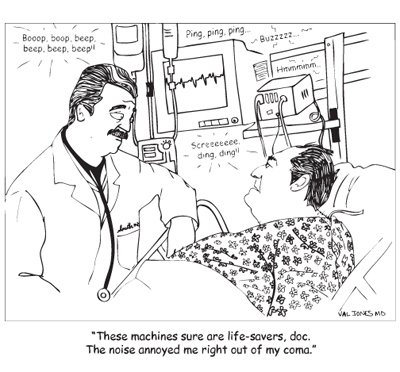June 10th, 2011 by Happy Hospitalist in Health Policy
No Comments »

Hospital costs are out of control. We have an aging population living longer with more complicated presentation of disease. We have an insurance driven platform instead of a health driven accountability. The long term sustainability of that architecture is one of guaranteed insolvency.
One way or another hospitals are going to find their lifeline cut off. Medicaid is bankrupt. Hospital profit margins from Medicare have been negative for almost a decade. In addition, the rapid rise in private insurance premiums and industry’s gradual but accelerating exit from the health insurance benefit market all tell me that hospitals must find a way to reduce the cost of providing care.
There are many ways hospital costs can be reduced. Administrators are paid handsomely to make it happen. Either they do or they don’t succeed. Either they survive the coming Armageddon of hospital funding or they don’t. The hospitals least able to reduce their expenses in a market of decreasing payment will fold and other hospitals will become too big to fail. You want to be too big to fail. That’s the goal. If you can survive the coming tsunami, you will be saved and bailed out when you are the only one left standing. That is what history has taught us.
So, how can hospital costs be reduced? One way is to Read more »
*This blog post was originally published at The Happy Hospitalist*
September 22nd, 2010 by DrWes in Better Health Network, Health Policy, News, Opinion
No Comments »

With patients having to pay more of what’s charged for their healthcare, comparisons between medical systems like this one in Pennsylvania make us wonder if bigger necessarily means better. From the Times-Tribune:
The Pennsylvania Health Care Cost Containment Council study looked at four regional hospitals that offer cardiac surgery: Geisinger Wyoming Valley, Plains Twp.; Community Medical Center and Mercy Hospital, Scranton; and Pocono Medical Center, East Stroudsburg.
Among the four, Geisinger Wyoming Valley carries the biggest price tag. In 2008, the average hospital charge for a coronary artery bypass graft surgery was $108,029 and the average hospital charge for valve surgery was $132,740, according to information in the report. Read more »
*This blog post was originally published at Dr. Wes*
May 17th, 2010 by RyanDuBosar in Better Health Network, Health Policy, News
No Comments »

Congressional democrats want more transparency in healthcare, believing it would further drive down the cost of care, reports Politico.
Hoping to drive competition, some lawmakers are grumbling to force doctors to reveal business negotiations between them and drug and device makers. Opponents worry that manipulating economics would backfire. If everyone knows their competitor’s business, why bother negotiating lower prices?
But transparency worked for Wisconsin’s hospitals, not in business dealings but in reporting outcomes, reports The Fiscal Times. By voluntarily revealing clinical outcomes on the Web, the Wisconsin Collaborative for Healthcare Quality was able to spur low-performing hospitals to improve, high-performing facilities to eliminate tests that didn’t improve outcomes, and create an informed healthcare consumer with choices where to receive care.
*This blog post was originally published at ACP Hospitalist*
March 20th, 2010 by JessicaBerthold in Better Health Network, Health Policy, Research
No Comments »

Hospital costs for treating septicemia increased by an average of almost 12% yearly from 1997 to 2007, the AHRQ said today, citing data from its Healthcare Cost and Utilization Project. Costs jumped from $4.1 billion in 1997 to $12.3 billion in 2007. Other costly conditions in the same time period:
Osteoarthritis: 9.5% annual increase ($4.8 billion to $11.8 billion)
Back problems: 9.3% annual increase ($3.5 billion to $8.5 billion)
Acute kidney failure: 15.3% annual increase ($1 billion to $4 billion)
Respiratory failure: 8.8% annual increase ($3.3 billion to $7.8 billion)
The most important driver of cost increases in the hospital was the greater intensity of services provided during a hospital stay, which grew 3.1% per year from 1997 to 2007 and accounted for 70% of the total rise in hospital costs, the AHRQ said.

*This blog post was originally published at ACP Hospitalist*













